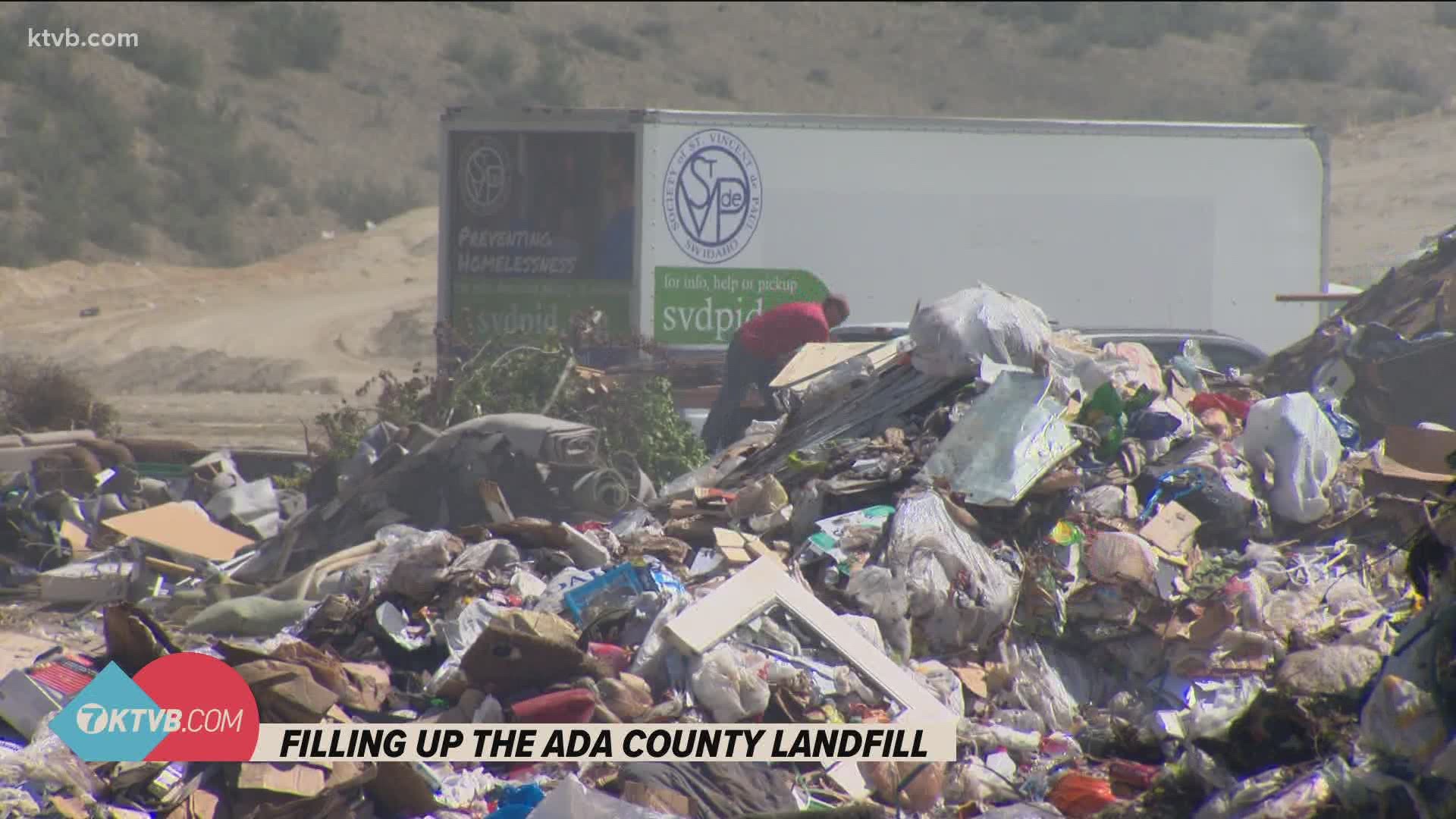ADA COUNTY, Idaho — Before 1949, the Boise River was a major receptacle of the area's trash. That year, the city banned dumping trash anywhere but designated landfills and one of the first was on the present-day campus of Boise State University.
Ada County's current landfill location is off Seaman Gultch Road, on the way to Hidden Springs. The 2,700-acre site has been in use for decades. In 2007, the county opened the North Ravine Cell (NRC) on that property, with the capacity to hold 70,000,000 cubic yards of trash.
To put that in perspective, one football field, endzone to endzone and sideline to sideline, is about 6,400-square yards. To fill that area with trash, ten feet deep, to the top of the goal post crossbar, it would need about 21,333 cubic yards of garbage. It would take nearly 3,300 football fields, filled ten feet deep to equal the amount of space in the North Ravine Cell.
Stacking those football fields on top of each other would reach more than 32,000 feet in the sky, higher than the cruising altitude of commercial airplanes. Spread out, side by side, it would cover an area of nearly seven square miles or the entire city of Star. Every day, about 100 truckloads of trash in are taken to NRC.
When the landfill opened in 2007, Ada County's population was about 373,000 people. In 2020, the state's largest county's population jumped to about 503,000.
"In the planning, it was engineered to be a 100-year cell based on what they thought were going to be the growth numbers, but the growth numbers were substantially larger than anyone could have anticipated," said Tim Otte, the deputy director of the Ada County landfill.
Originally, the NRC was expected to be able to operate for the next 90 years.
Already, 6,000,000 cubic yards have already been filled, and the expected lifespan of the landfill has declined by decades.
"It looks like 2068 is our expected closure date now," Otte said.
Otte told KTVB that right now, he's not concerned about the landfill filling up too quickly, but added that they are becoming more cognizant and more aware of what they're doing and how they're doing it.
"It's not and that's actually why we want to explore more diversion programs to make it easier for people," he said. "Keeping it environmental and economical it's a balance that's important but it's a balance that takes a lot of vetting to get it right."
Otte added that the best thing people can do to help is to make sure they're getting the most out of what they recycle and be aware of what they're throwing away.
Join 'The 208' conversation:
- Text us at (208) 321-5614
- E-mail us at the208@ktvb.com
- Join our The 208 Facebook group: https://www.facebook.com/groups/the208KTVB/
- Follow us on Twitter: @the208KTVB or tweet #the208 and #SoIdaho
- Follow us on Instagram: @the208KTVB
- Bookmark our landing page: /the-208
- And we also turn each episode into a podcast or Podbean
- Still reading this list? We're on YouTube, too:

